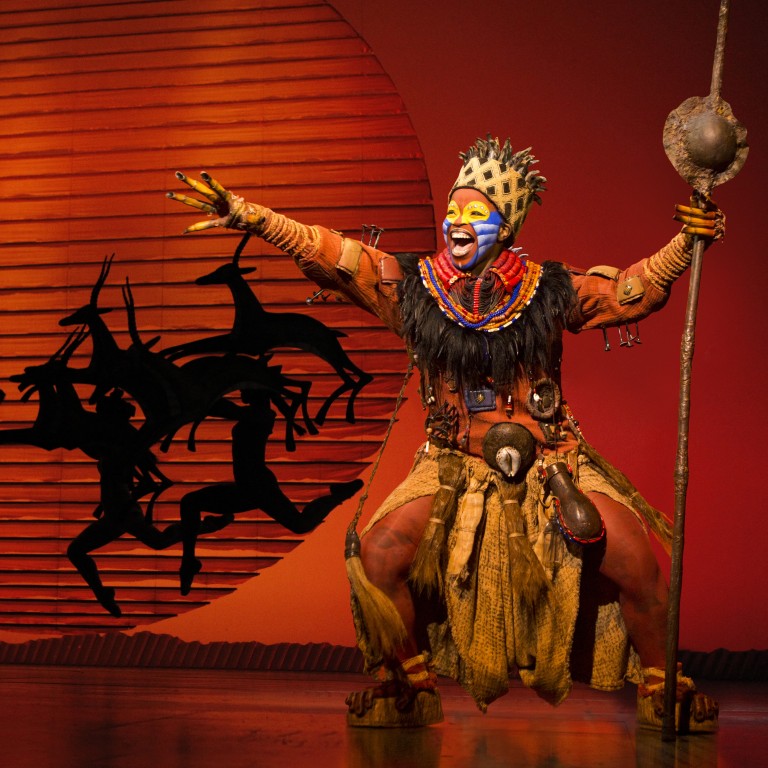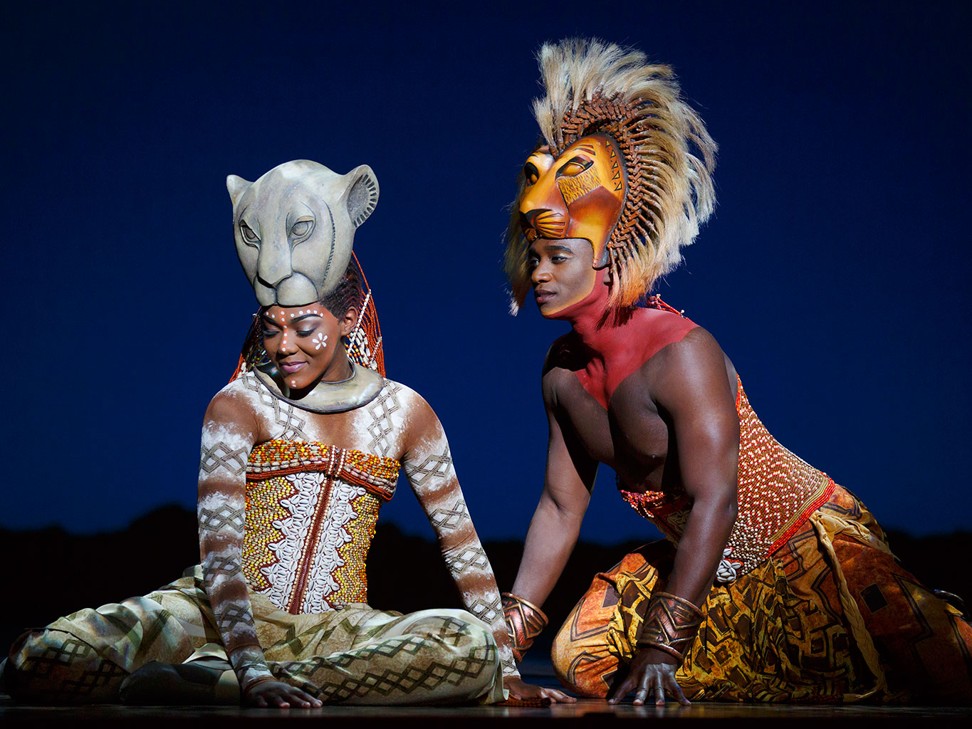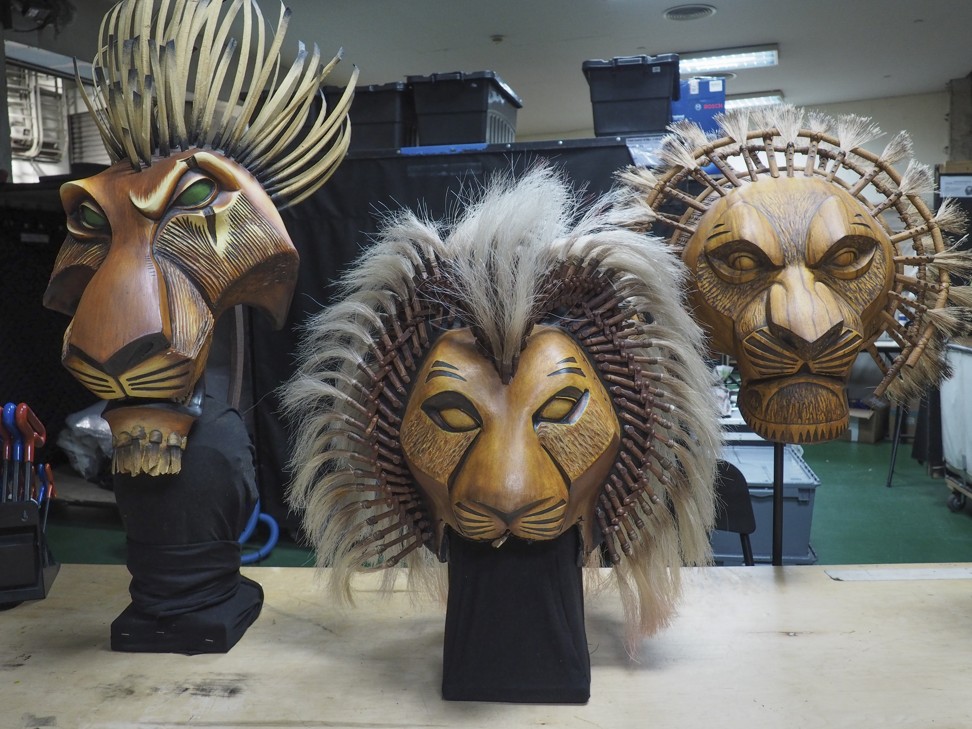
The Lion King: what Hong Kong theatre-lovers can expect from the musical this Christmas, from master puppetry to localised ‘surprises’
- The wildly successful Broadway show, enjoyed by people in 20 countries worldwide, is coming to Hong Kong next month
- Cast and crew talk about what has changed since its debut in 1997, and why it is important to update it for the modern audience
From the day Disney’s The Lion King arrived on the planet, people around the world have fallen in love with the story of Simba, and with the film’s soundtrack.
The 1994 animation is regarded as a high-water mark for Disney, while the stage musical that debuted three years later has become one of the most successful productions – highest grossing and longest running – of all time.
Almost 95 million people in 100 cities and 20 countries have been introduced to theatre director Julie Taymor’s adaptation of life at Pride Rock, and Hong Kong will get its first glimpse of the show when the musical is staged in the city over the Christmas period, as the conclusion to an Asia tour that began in the Philippines in March.

On stage, the action is brought to life by newcomers Jordan Shaw as Simba and Amanda Kunene as Nala, as well as long-standing Lion King performer Ntsepa Pitjeng as the mandrill Rafiki, the story’s charismatic narrator.
All the well-loved songs are there – from The Circle of Life to Can You Feel the Love Tonight – along with three new songs added in 2017 to celebrate the show’s 20th anniversary, including the lively She’s Gonna Eat Me.

These won’t be the only differences audiences who have previously seen The Lion King might notice: small tweaks over the decades have brought the show up to speed with a modern audience.
Taymor set the ball rolling by flipping Rafiki’s gender (originally male) and elevating the importance of the lionesses, while scenes have been streamlined and the running time chiselled down slightly in line with audiences’ reduced attention spans, says David Kreppel, associate music supervisor of The Lion King’s international tour.
“Theatre evolves over time. Our attention spans have got probably a little bit shorter. So the show has been paced just a little bit differently. Twenty years ago tempos, for example, in the show were a little bit slower because everybody kind of functioned a little bit slower. So [this show is] a combination of keeping very faithful to the original and just adjusting it slightly,” he says.
The stage is expansive, but very simple. The themes are enormous, but [instead of] tonnes of sets, we have big bold statements
During moments of comic relief delivered by meerkat Timon and warthog Pumbaa, the script has incorporated Mandarin slang, Chinese food references, “xie xie ni” (thank you) and an expression of surprise – “Wa!” – to tickle the Taiwanese audience. During its original run in China in 2006, the company went a step further, with the cast singing songs and interacting with the audience in Chinese.
Hong Kong audiences will be given similar local “surprises”, the international tour’s resident director Omar Rodriguez says.
“This show has a different energy in every city and every country, because we work together to get a sense of the culture of that country.”

Its debut in Taipei in July, in the same week Disney released its remake of the movie, could have been over-saturation for the franchise, but the show’s producers were confident the new film’s power could only be a good thing for the stage version. Although critics griped about the lack of expression in the characters compared to the original cartoon, the remake became the fastest animated film to gross US$1 billion, beating any previous Disney production, and the seventh-highest grossing movie ever.
It has taken more than two decades for the musical to land in Hong Kong, but it comes at a time of nostalgia for Disney’s ’90s “golden era”, and The Lion King is the jewel in a crown studded with classics. With millennials who enjoyed Disney films as children starting their own families, the company is cashing in by churning out both live-action and CGI remakes of its legacy animations with Mulan , The Little Mermaid, and a 101 Dalmatians spin-off focusing on villain Cruella De Ville in the works.
“It's the same reason people go see Shakespeare for hundreds of years,” says Kreppel. “It's a familiar story with a slightly different point of view; faithful to the original with slight differences. So anybody who loves The Lion King is going to love all its incarnations.”
A history of The Lion King musical, coming to Hong Kong
“They could have turned everything into an LED screen experience,” Kreppel says. “They didn't because so many of the truly magical storytelling moments are ancient: tears coming out of a mask will always be beautiful. The stage is expansive, but very simple. The themes are enormous, but [instead of] tonnes of sets, we have big bold statements.”
Kreppel cites Japanese theatre, and Indonesian theatre with its various forms of mask work, and wayang golek (rod puppets) and his knowledge of Chinese puppets, and Indian, and French ombre chinoise (shadow play), which originated in China, as inspiration.

In The Lion King, audiences see leaping antelopes, circling birds, snarling lions, slinking cheetahs, swaying giraffes, bowing zebra, scurrying mice, lumbering elephants and stampeding wildebeest all animated and controlled by cast members, creating a feast for the eyes.
Of the 200 puppets used in the show, the lions hold the gaze for the longest.
While Mufasa, Simba and the lionesses wear masks elevated above the actors’ faces, Scar is brought to life as an articulated hollow costume controlled with snarling energy by performer Anthony Lawrence. Though Simba and his father have symmetrical, kingly masks to demonstrate their morality, the costume of Mufasa’s outcast brother is jagged and hollow, and worn alongside a rib cage corset.

Having both the animal and human’s face visible at the same time creates Taymor’s concept of the “double event”, whereby creature-like movement and human expression combines to form a character.
“You get the sense of the animal, as well as the humanity of the character,” Rodriguez says.
“In Rafiki, for example, you will see the baboon with the make-up and the feet. In the rest of the body, you will see the humanity, the spiritual leader. The storytelling and the physicality is really important in this show,” he adds.
Shaw, who plays Simba, says: “The movement, inspired by Japanese theatre, allows the puppet to marry with the body. With a tilt of your face, the whole puppet moves along with it. We're constantly reminded to explore how our bodies can move like lions. That helps to bring the costume and mask alive.”

For a story designed to entertain children, its creators go to great lengths to justify its themes and relevance to modern society, and pry apart the layers of allegory and moral messages within the tale, which has been likened to William Shakespeare’s Hamlet in its story of princes and plotting.
Rodriguez explains: “It's about the emotion; it's about humanity. And I think that's why this show is timeless. Because humanity never gets old. It is always present … The main reason we are telling this story is to share with people that we are humans, and that's why The Lion King is so important and so great.
“It reminds us what we are, it doesn't matter what shape, colour or religion or whatever you have: you're a human. Just like me.”
The Lion King runs from December 18 to January 12 at the AsiaWorld-Expo. Tickets, priced from HK$399 to HK$1399, are on sale at HK Ticketing. Evening performances with additional matinee shows on Saturdays and Sundays.

